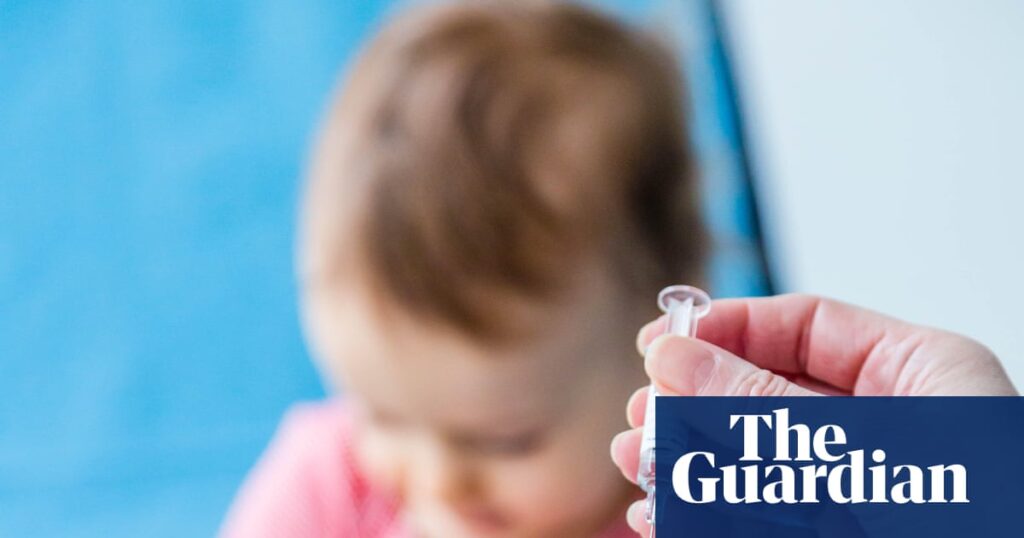England needs to “wake up” to its faltering infant vaccination programme, experts have warned, as it was revealed that one in five children start primary school unprotected from serious infectious diseases.
According to the World Health Organization (WHO), the target for vaccine uptake among children in order to achieve herd immunity is 95%. But figures for 2024-25 released by the UK Health Security Agency on Thursday show that no childhood vaccine has met this requirement.
Only 83.7% of five-year-olds have received both doses of the measles, mumps and rubella (MMR) vaccine, while uptake of the four-in-one preschool booster vaccine – which protects against polio, whooping cough, tetanus and diphtheria – stood at 81.4% among five-year-olds in England.
The low uptake rates have prompted fears that children will be more vulnerable to infectious diseases as they begin primary school in September. The government has urged parents to make sure their children are up to date with their vaccines.
In July a child died in Liverpool after contracting measles, the first such death in the UK in a decade. Only 73% of children in Liverpool have received the necessary two shots to protect against measles.
Prof Helen Bedford, from the UCL Institute of Child Health, said: “The country is facing a serious wake-up call, because if we continue down this path we’re going to see many more children unwell and we’re going to see more deaths.
“Measles, among these other diseases, is incredibly infectious and to keep the disease at bay we really do need much higher levels of uptake than what we’re seeing at the moment.”
She added: “The other big problem [for vaccine uptake] is that there are vast inequalities in uptake. We know that uptake is also lower among some ethnic minority groups, notably black Caribbean and African populations.”
The data reveals stark regional inequalities. While more than 90% of five-year-olds in the north-east of England received both doses of the MMR vaccine, only seven in 10 (69.6%) of eligible Londoners had received the same. Meanwhile, regional uptake of the four-in-one booster ranged from 88.9% in the north-east of the country to 63.8% in London.
London’s mobile population is a significant reason for its low uptake, according to Bea Taylor, a senior fellow at the Nuffield Trust. “Parents and carers in the capital are more likely to face barriers including having to move house regularly, which can make it difficult to stay registered with a local GP and receive reminders about vaccinations,” she said.
Prof Kate Pickett, an academic co-director at Health Equity North, said it was “clear there are still challenges to overcome to address regional disparities in child vaccination rates”.
The UK is the worst of the G7 nations regarding MMR vaccination uptake, according to the WHO: as of 2024 only 89% of children had received their first MMR jab. Globally, millions of children are at risk of lethal diseases owing to vaccine coverage having stalled or reversed, according to the largest study of its kind.
Dr Helen Skirrow, a clinical research fellow at Imperial College London’s School of Public Health, said: “Declining vaccine uptake is very worrying, as without reversing this trend and achieving sufficient herd immunity the increasing measles outbreaks we have seen over recent years could continue. It is a public health imperative that more children get vaccinated with the recommended two doses of MMR vaccine in order to be protected.”
Stephen Kinnock, a health minister, said: “Too many children are starting primary school without complete protection against preventable and potentially serious illnesses like measles, whooping cough and mumps.
“Vaccines save thousands of lives every year and prevent countless hospital admissions. I urge all parents to check their child’s vaccination record and contact their GP practice if any jabs are missing.”


